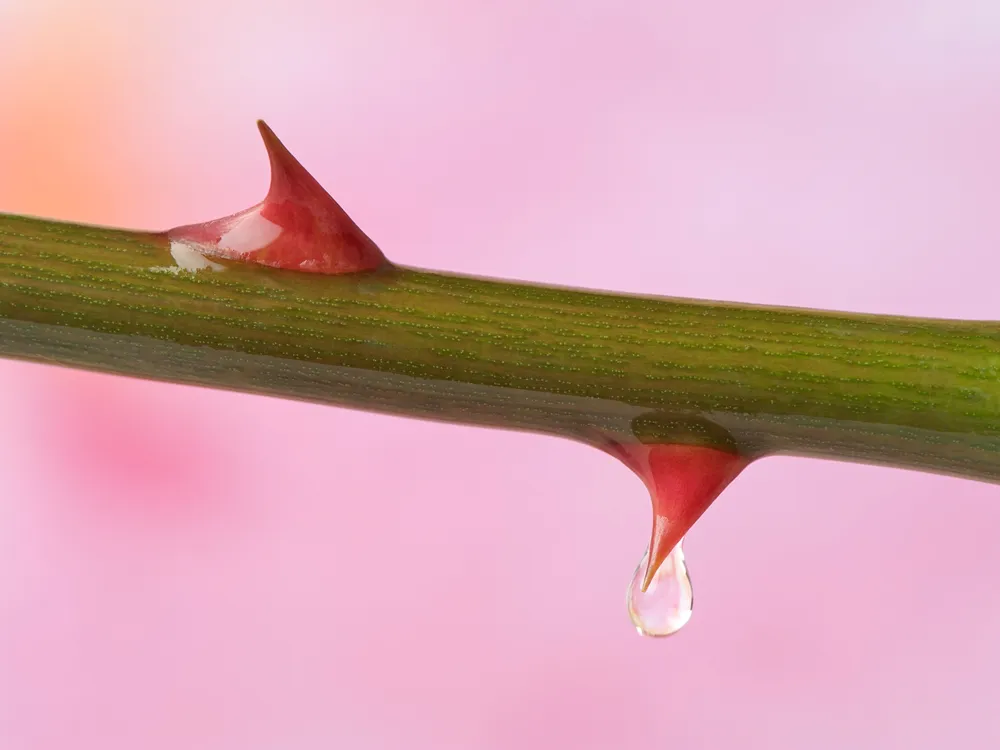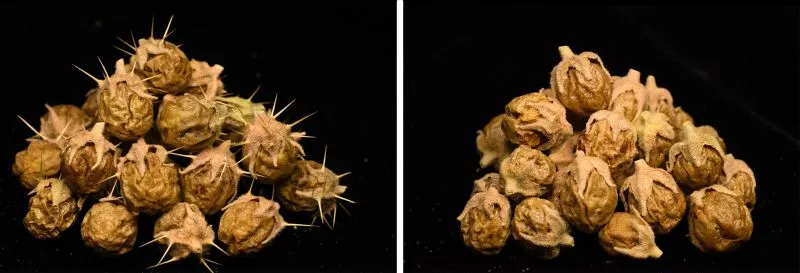Scientists Identify the Gene Behind Thorny Roses and Other Prickly Plants
A recent study could pave the way to cultivating various thornless plants, making them easier to grow and potentially more widely available

Every rose has its thorns, and other common plants like rice, raspberries and blackberries also sport sharp spikes. Botanically, these pointed defenses are known as “prickles,” and the plants use them as protection against hungry herbivores.
However, exactly how these spines evolved in various plant species that are not closely related wasn’t fully understood—until now. A team of researchers recently found that the gene coding for thorns is the same across different plant families, even though they evolved the trait independently. The findings were published in early August in the journal Science.
“It’s not that there was one common ancestor that had prickles, and then it radiated out over 400 million years to all these others, and then they were lost sporadically. In fact, what it looks like is that they seem to be quite readily gained in different lineages,” study co-author Zachary Lippman, a plant biologist at the Cold Spring Harbor Laboratory, says to CNN’s Taylor Nicioli.
Prickles on roses and other plants evolved independently at least 28 times over 400 million years, according to the study. While this means the thorny mechanism cannot be traced to a common ancestor, understanding the genetic origin of the trait could help horticulturists cultivate thornless varieties of plants in the future.
Identifying a common gene

To find the gene responsible for thorns, scientists investigated plants in the Solanum genus. These plants, known as nightshades, encompass more than 1,500 species and include common culinary favorites like tomatoes, eggplants and potatoes. The appearance of prickles in this genus dates back to six million years ago, CNN reports.
The team cross-bred varieties of eggplant—one farmed species known as the brinjal eggplant that does not have prickles, along with a prickly wild relative—and found that only some of the hybrid offspring ended up with thorns, reports Carl Zimmer for the New York Times. They identified that the eggplants with prickles carried the same specific variant of a gene called LONELY GUY, or LOG, while those without prickles had mutations on the gene. In plants, LOG controls production of cytokinin, a hormone that affects growth and cell division, according to a statement from the Cold Spring Harbor Laboratory.
Next, the researchers focused on LOG genes in other plants, which diverged from the nightshade family on the evolutionary tree about 150 million years ago. In the scientific literature, they found a link between LOG genes and prickles in rice. In experiments, they silenced the LOG gene in roses, which in turn suppressed the development of prickles.
Despite being responsible for plant growth, the LOG gene could be manipulated by the researchers without negatively affecting the plants, because plants have multiple copies of it. The one that codes for prickles can be turned off, while other LOG genes remain functional to code for the plant’s development.
While the various plants share the LOG gene, they evolved thorns independently from each other in a process called convergent evolution. Convergent evolution is when species adapt to their environment with similar features, in this case thorns, without being closely related.
The findings highlight how plant evolution innovates over time, and sometimes in an unexpected manner. “Innovation in many cases might simply reflect reusing old genes in new ways,” says Vivian Irish, an evolutionary biologist at Yale University who was not involved in the study, to the New York Times.
A future with thornless plants

After identifying that the LOG gene causes prickles to grow, scientists used the gene-editing technology CRISPR to cut it out from plants, effectively engineering tomatoes and roses without thorns, writes Ellen Phiddian for Cosmos. In this way, the new finding could be used to produce plants without prickles, making it easier for gardeners to pluck roses without getting stabbed.
Removing the prickles from other plants could make certain spiny species more accessible in grocery stores. For example, desert raisins, berries native to Australia, grow in prickly bushes. By creating a thornless variety, the fruit could become easier to harvest and more readily available worldwide, reports CNN.
“It’s really about having more knowledge … and understanding how important mutations were to give us the food that we eat at the scale that we eat it and knowing that there’s more potential out there,” Lippman tells the publication.

